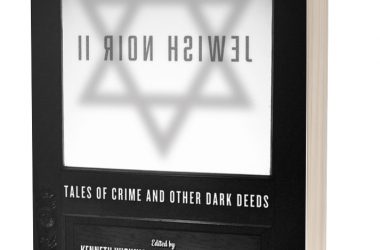by Kenneth Wishnia
AlterNet
February 13th, 2014
Sometimes the only place where bankers go to jail for their criminal activities is in the pages of crime fiction
Let’s
face it: some of the most ideologically committed people rarely read
fiction, even socially conscious fiction, which means they’re only
getting part of the story.
If you’re writing a research paper on
the Great Depression, you’re probably going to start off by reading
non-fiction accounts of the events of that decade. But if you want to
know what it actually felt like to lose your home to the banks, travel
across the country just to work a seasonal job with long hours under
appalling conditions, and get assaulted by vigilantes because you dared
to speak up, you should look no further than John Steinbeck’s
masterpiece The Grapes of Wrath.
The same goes for crime fiction.
1. Crime fiction has the longest tradition of progressive social criticism of any American popular literary genre.
While
some of today’s best-selling authors are attracted to the vigilante
law-and-order and CIA-assassin type of crime thrillers, American
hardboiled crime fiction began as a product of the rampant lawlessness
and corruption of Prohibition in the 1920s. Dashiell Hammett, best known
for The Maltese Falcon (1930), worked as a Pinkerton detective
for several years and witnessed the violent suppression of the Anaconda
copper miners’ strike in 1920. His first novel, Red Harvest
(1929), draws on that experience, set in a mid-sized western city that
is completely controlled by two rival criminal gangs. (One of my
favorite lines from this novel: “The room was as dark as an honest
politician’s prospects.”)
Raymond Chandler, best known for The Big Sleep (1939) and Farewell, My Lovely
(1940), perfected a cynical style in response to the ravages of the
Great Depression, the systemic corruption, brutality, and racist
tendencies of the LAPD, and the age-old unwritten rule of “one law for
the rich, another law for the rest of us.” Chandler’s polished writing
style can turn a drive from downtown Los Angeles to the Hollywood hills
into a sociological essay on the class dynamics of each neighborhood
that his detective Philip Marlowe passes through.
Closer to our
own era, authors such as Marcia Muller, Sara Paretsky and K.C.
Constantine have staked their claims to this territory, and opened up a
path for a host of worthy descendents.
2. Crime fiction exposes the social conditions that lead to crime.
Walter
Mosley’s first novel, “Devil in a Blue Dress,” was made into a film in
1995. I once heard him tell an audience, “Hollywood wants a Ku Klux
Klansman and a Black Panther to watch the same movie,” because the
filmmakers had cut most of the racial politics depicted in his novel so
as not to risk alienating potential ticket buyers. This is one reason
why in so many films and TV shows featuring serial killers, the typical
story line is about catching the killer before he kills again, but there
is no indictment of the larger society that produced him.
It’s
not as simple as the cliché that “society made him do it.” But there is
clearly something about U.S. society that makes us number one in serial
killers in the world. We also have the most gun deaths of any stable,
industrialized democracy, and the fact that apocalyptically-inclined
extremists and other mentally unstable people have such easy access to
guns is a major factor. But the country’s violent history — of genocide
against the Native American population, enslavement of
African-Americans, and imperialist expansion beyond our borders — is
surely a factor as well.
The effects of this violent history play
out on many levels. If you want to experience a powerful depiction of
how Americans’ devotion to the culture of football produces and condones
brutal group behaviors and allows star athletes to get away with rape
and other crimes, read S.J. Rozan’s novel, “Winter and Night.”
Check out the Filomena Buscarsela series: 23 Shades of Black | Soft Money | The Glass Factory | The Red House | Blood Lake | Back to Ken Wishnia’s Author Page


